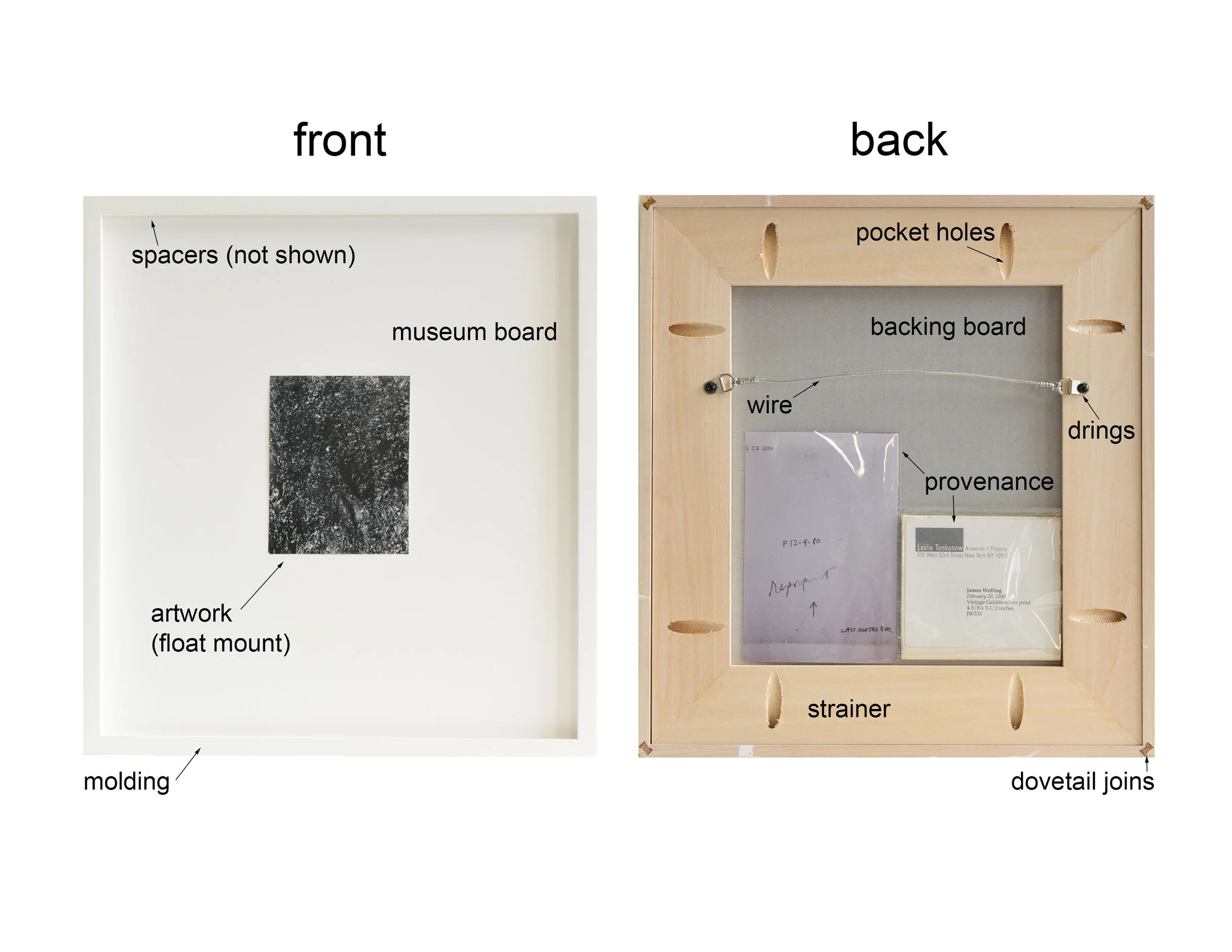the framer’s handbook
DDG's Frameshop's blog. Take a look at designing new projects, helpful information on framing materials, and expert tips on how to care best for your art.
Taking care of your frames once they’re hung on the wall is an important step to keeping your artwork looking as good as it did when you acquired it.
Here’s what you’ll need to maintain your frames: a few microfiber cloths, a cleaner appropriate for your glazing in a spray bottle.
Have you ever looked at a piece of artwork and wondered how it was 'floating' into place? How does the frame safely attach a drawing or photograph without permanently adhering the artwork down? In conservation framing, everything should be completely reversible and pH neutral, eliminating a lot of common adhesives from the framer's options. Luckily, there is a wonderful naturally made glue and traditional technique that meets all the requirements: wheat starch and rice paper hinges.
So what is a hinge? And why not just glue the artwork directly down to the backing? Time, heat, and humidity. Our environment is constantly changing, both in temperature and moisture content. These fluctuations occur not only in the air but in the objects and materials around us - including our artwork! Because of this, the attachment method needs to be able to move with the artwork.
Your artwork should reflect you - but not literally! Here's all you need to know when choosing the best glazing for your collection. At DDG Frameshop, we offer three types of glazing. The first priority in framing is artwork safety and glazing is your first line of protection from damaging UV rays. For that reason, we only offer glass or plexi with UV protection.
Are all UV protected glazing created the same? What are the differences in quality and how do you know what is best for your artwork? To us, the difference is clear.
So you got the piece framed, now you just need to hang it on the wall. Below is a quick look at the tools and materials needed for hanging in your home.
First things first, start out with an organized work space. Laying all your tools out in a clear and ordered way will let the rest of the installation go smoothly. In our hanging tool kit we carry a hammer, level, tape measure, blue tape, pencil and paper, hanging hardware, and a Mr. Clean Magic Eraser.
Every industry has its own specific terminology and so does framing! This quick post breaks down the basics about the parts and pieces of a frame and the vocab helpful to know when talking about your next project.
A frame is always the safest way to store your artwork. But how do you take care of your collection when it's not framed? Here is a simple step by step way to safely wrap your artwork when traveling to and from the gallery, your home, and to the framers.
We'll be using materials that are easy to come by and perfect for quick transportation. However, please note that we'd suggest using only pH neutral materials when storing artwork longer that a month. We would also not suggest this method for artwork being shipped via mail carrier service.
In addition to framing, our team of experts can tackle an array of artwork condition and repair issues. In this case study completed by our colleague Nathan Wong, we take a wrinkled and damaged print and flatten it back to its original beauty.
Going to work at DDG Frameshop feels like to getting to go behind the scenes at a world class museum everyday. The day Edward Steichen's The Victor came in was no exception. While our aesthetics at DGG often highlights the artwork by the frame's simplicity, sometimes a piece requires extra embellishment. Through an engagement with art history and a focus on the forms and tones within a piece, DDG Frameshop strives to design frames that uniquely compliment the artwork.
We have quite a library of books collected over the years, which together layout a timeline of framing's history. These references become great resources for us when heading to the drawing board. When designing a frame, its often a fine line navigating between historical accuracy and re-contextualizing the piece within today's contemporary styles and interiors.








